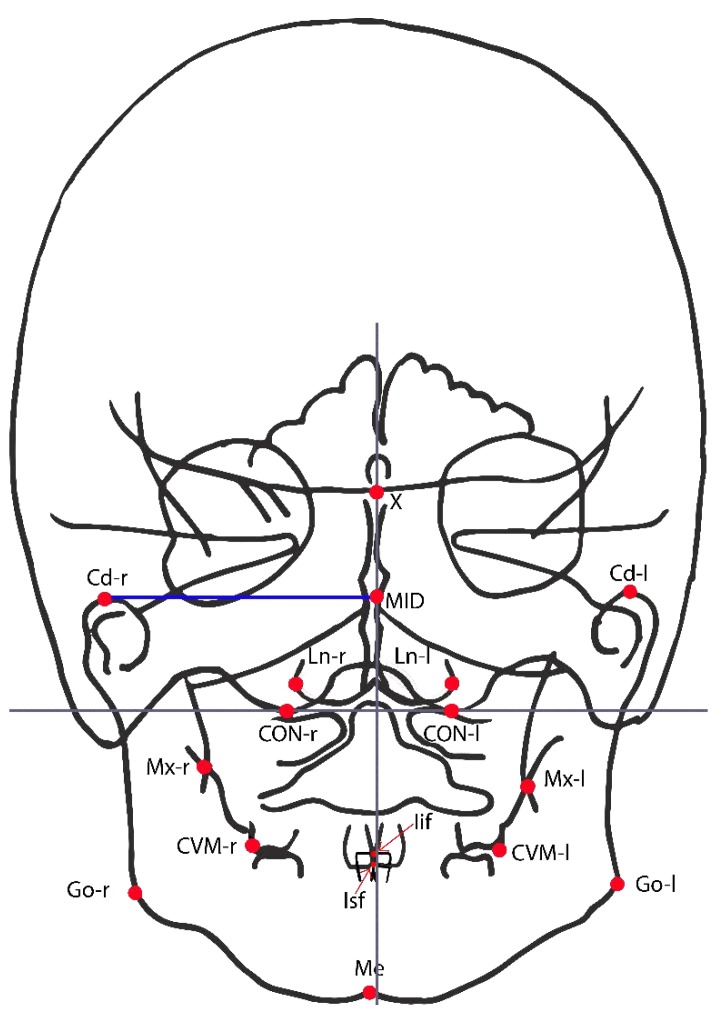Figure 1.
Cephalometric landmarks used in the present study on postero-anterior cephalogram. CVM+ r/l = Upper intermolar point (most prominent point on the sagittal plane of the vestibular-mesial cuspid-upper left and upper right first permanent molar); Ln r/l = Lateronasal (external points at the maximal horizontal diameter of nasal cavity); X = Crossing point between the perpendicular plate of the ethmoid and the projection of the floor of the anterior cranial fossa floor; Ans = Anterior cephalometric nasal spine; Mx r/l = Maxillare (the intersection of the lateral contour of the maxillary alveolar process and the lower contour of the maxilla-zygomatic process of the maxilla); Cd r/l = Condylar (the most superior point of the condylar head); Go r/l = Gonion (the point located at the gonial angle of the mandible); Me = Menton (is the most inferior midpoint of the chin on the outline of the mandibular symphysis); Iif = Incision inferior frontale the midpoint between the mandibular central incisors at the level of the incisal edges; Isf = Incision superior frontale (incision superior frontale, the midpoint between the maxillary central incisors at the level of the incisal edges); MID = Crossing point between the axis of symmetry and the horizontal straight line that connects the homolog cephalometric points; CON = Occipital condilion (point of cephalometric congruence between the inferior condyle of the occipital bone and the contour of the great occipital foramen); Axis of reference = Axis passing through right and left CON; Axis of symmetry = Perpendicular to the reference axis, passing through the highest point of the occipital foramen.

